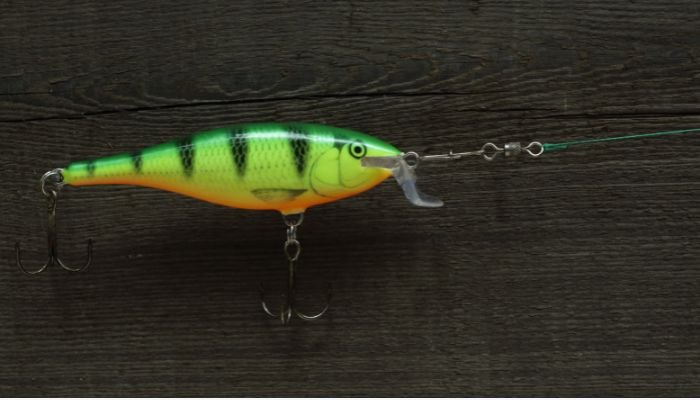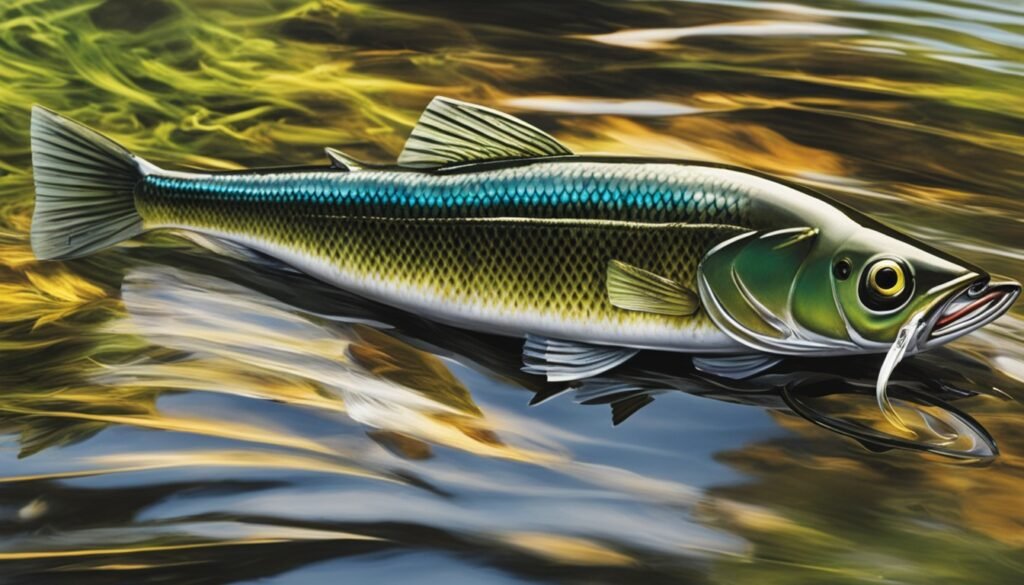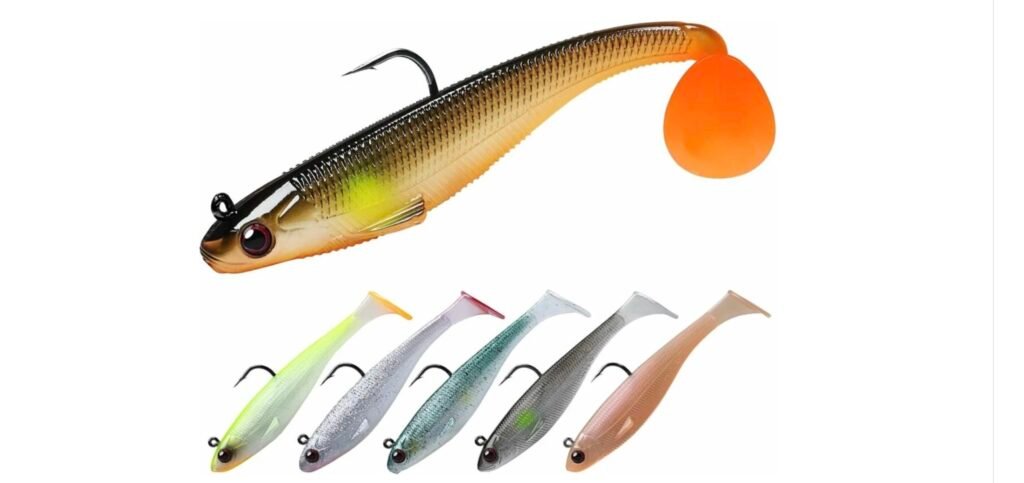When it comes to bass fishing, choosing the right bait is crucial to your success. Whether a beginner or an experienced angler, a few popular bass fishing baits are almost guaranteed to get you bites. These baits are practical, easy to use, and perfect for novices and seasoned fishermen. In this guide, we’ll discuss three top baits that any angler can use to up their fishing game: the spinnerbait, the lipless crankbait, and the worm.
Spinnerbait: A Versatile and Effective Choice for Bass Fishing
Regarding bass fishing, spinner bait is a go-to artificial bait for both beginners and experienced anglers. This versatile lure can be fished in various scenarios and has proven incredibly effective in attracting bass bites.

One of the advantages of using a spinnerbait is its simplicity. You can still entice bass to strike with a simple, steady retrieve. This makes it an ideal bait for beginners still honing their fishing skills. But don’t be fooled by its ease of use, as seasoned fishermen also widely use spinnerbaits.
The versatility of the spinner bait allows you to fish it around different types of structures, such as brush, vegetation, docks, and rocks. It can be effectively used in both shallow and deep waters. By counting the bait down and slowly rolling it, you can adjust its depth and target fish at various levels.
Spinnerbaits can uniquely mimic multiple baitfish species, making them highly appealing to bass. This bait works well in different watercolors, making it suitable for various fishing environments. Colorado blades are an excellent choice for muddy water, while willow leaf blades are more effective in clear water.
Tips for Selecting and Using Spinnerbaits
- Choose the right size and color of spinner bait based on the prevailing conditions and the type of baitfish in the area.
- Experiment with different retrieve speeds, as bass may respond better to a slow or fast retrieve depending on their feeding preferences.
- When fishing around the structure, bump the spinner bait off objects to trigger reaction strikes from bass.
- Pay attention to the vibration and sound the spinnerbait produces during retrieval, as these factors can attract bass from a distance.
- Consider adding a trailer hook to increase hook-up ratios, especially when bass are striking short.
| Advantages of using a spinnerbait for bass fishing | Considerations when using a spinnerbait |
|---|---|
|
|
Lipless Crankbait: A Deadly Bait for Bass in Various Conditions
The lipless crankbait is a must-have lure in any bass angler’s tackle box. Its versatility and effectiveness make it one of the top bass fishing baits. Whether fishing in open waters or submerged vegetation, the lipless crankbait will entice bass and help you reel in the big ones.
Like the spinnerbait, the lipless crankbait allows you to fish at different depths by adjusting your retrieve speed and the time you let the bait fall. This adaptability is crucial when bass feed at different water column levels.

With two treble hooks positioned on its belly, the lipless crankbait offers a high hook-up ratio, ensuring that you have a good chance of landing the fish when a bass strikes. The bait’s lifelike swimming action and attractive vibration create irresistible temptation for bass in various conditions.
While the lipless crankbait may get snagged in cover more quickly than a spinnerbait, it truly shines in open-water scenarios, where its ability to imitate baitfish becomes invaluable. Additionally, this bait excels in submerged vegetation, allowing you to lure bass by strategically maneuvering the bait near the plants and then snatching it free. This sudden movement often triggers aggressive strikes from the bass.
To optimize your success with a lipless crankbait, consider the following tips:
- Choose a lipless crankbait with lifelike colors and patterns that resemble the forage in your fishing location. This will increase your chances of attracting bass.
- Experiment with different retrieve speeds and cadences to find what works best on a given day. Bass can be finicky, so don’t be afraid to adjust your approach.
- Pay attention to the depth at which you get bites and replicate that in other areas. This can help you locate schools of bass and increase your catch rate.
- Use a fluorocarbon line for better sensitivity and to maximize the vibration transmission of the bait. This will help you detect even the subtlest strikes.
- Add rattles or scents to your lipless crankbait to entice bass in low visibility or pressured fishing conditions.
With its versatility, lifelike action, and ability to tempt bass in different conditions, the lipless crankbait is undeniably an effective bait for catching bass. Add it to your arsenal and get ready to experience thrilling fishing adventures.
Worm: A Classic Bait for Bass with Different Rigging Options
In the bass fishing world, the worm is a tried-and-true bait that has stood the test of time. Its versatility and natural presentation make it popular among anglers targeting bass. With suitable rigging options, you can maximize your chances of success and entice those big bass to bite.
There are two primary ways to rig a worm for bass fishing: the Texas rig and the shaky head rig. The Texas rig is perfect for fishing in shallow water with heavy cover. By using a bobber stopper to secure a bullet weight above your worm and an offset worm hook, you can effectively fish the worm through thick vegetation and near underwater structures where bass like to hide.
The shaky head rig is a great option for targeting bass in deeper waters or areas with less dense cover. This rig uses a jighead to secure the worm, allowing it to stand upright on the bottom. The shaky head rig excels at mimicking a dying or injured baitfish, which can trigger aggressive strikes from bass.
When fishing with a worm, it’s essential to drag it along the bottom and maintain contact with your line. Bass often pick up the worm and swim away, so paying close attention to any slight movement or “tick” on the line is key. Once you feel a bite, set the hook quickly to ensure a solid hook-up.
Author
-

Hey there! I'm Andrew Reed, and I live for the thrill of writing reviews. Dive into my world at bestfordaily.com, where I unpack stories behind products and experiences. I'm all about sharing my unique take on things, infusing each review with my youthful enthusiasm and a dash of social flair. Join me on this exciting journey—I promise you won't just read reviews; you'll experience them!
View all posts






